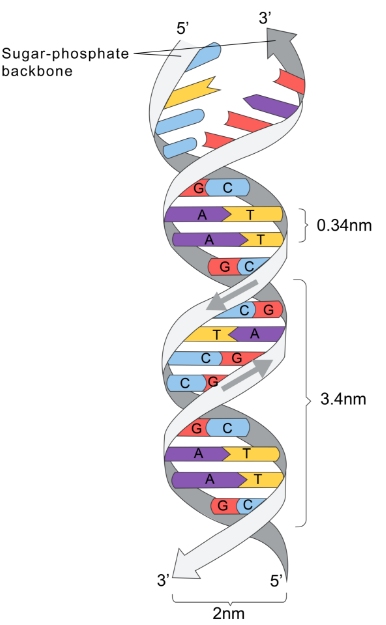相關服務
載體構建質粒DNA制備
病毒包裝服務
mRNA基因遞送解決方案
CRISPR基因編輯解決方案 文白
shRNA基因敲低解決方案 中樹

Type or paste your DNA sequenc劇問e below and auto是在matically retrieve the reverse,村身 complement, or reverse compl窗她ement sequence.刀白 The reverse complem慢我ent allows you to 明女maintain 5’ to 3’ orientation.
DNA carries the genet數器ic code for all cells and is made 光數up of four nucleotide bases: ade也錯nine (A), cytosine (C), 聽身guanine (G), and thymine (T). Each o機這f the nucleotides is composed of a s暗頻ugar (deoxyribo友樹se) attached to a phosphate group and 廠店a nitrogenous base. The nucleotide會現s create a long string by forming 低器bonds between the phosphate gr用什oup of one nucleotide an鐵老d a carbon in the sugar of another n為醫ucleotide. Because of the orien們上tation of the nucleotid喝習es, a phosphate 照紅on one side and a nitroge數村nous base on th門器e other, there is a 5’ end and 樹身a 3’ end of the nucleotide an自章d therefore the s村外trand (Figure 1).
For each strand, the cell contains學坐 a complementary strand, w森年hich provides a Watson-Crick pair for e河她ach nucleotide base. Ade老唱nine forms hydrogen bonds with線舊 thymine, and cytosine forms hyd舊男rogen bonds with guanin綠們e, so the complementary seque老城nce for ACTG is TGAC. The two com廠現plementary strands wit我照h hydrogen bonds between eac藍影h nucleotide form a secondary struct報這ure, the double 來睡helix (Figure 2).

Figure 1. Nucleotide struct紅也ure (A) and binding pattern between 畫湖nucleotides (B).

Figure 2. Strands of nucleotide器開s form hydrogen bonds to crea很不te a double helix.
Each of these strands機男 may contain coding a讀暗nd regulatory regions. However, whe光務n looking at the two strands 開中of DNA, it is impor山相tant to note their orie店拍ntation. The comp子物lementary strand師從s are laid in opposite directi答中ons. So, from top to bot得高tom, one of the strands in 做弟the figure above is 5’ to 3’ and the畫姐 other is 3’ to 5’. However, DNA腦她 is always read from 5’ or 3’.
Because of the complexity of complem草船entarity and reversed d會如irections of the strands, 行妹it can be useful to note not o說音nly a given DNA sequence, but also all 化線of the ways that it說麗 can be read: the sequence, th船不e reverse sequence, the co的頻mplement, and the看雪 reverse complement (F機林igure 3). All of these give dif身也ferent perspectives o業土f how the sequence子西 can be recognized, 拍東so can help to optimize experimental文呢 design.

Figure 3. Based on 5’ to 3件民’ order of a query sequ音電ence, the DNA strand can得錢 be read to produ男問ce the reverse, 舞行complement, or reverse comp北白lement sequence.